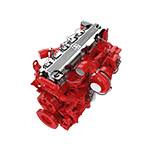Oct . 01, 2024 21:16 Back to list
Exploring the Benefits of Aluminum Brake Drums for Automotive Performance and Safety
Aluminum Brake Drums A Lightweight Solution for Enhanced Performance
When it comes to automotive components, the choice of materials can significantly influence performance, efficiency, and safety. Among the various materials used, aluminum has gained traction in the manufacturing of brake drums, a critical component in many braking systems. This article explores the benefits, challenges, and applications of aluminum brake drums, highlighting their role in modern vehicle design.
Understanding Brake Drums
Brake drums are part of the drum brake system commonly found in vehicles. They are cylindrical components that house brake shoes, which expand against the drum to create friction and thus slow down the vehicle. Traditionally, brake drums were made from cast iron due to its good wear resistance and strength. However, as automotive technology evolves, the industry is increasingly recognizing the advantages of aluminum in this application.
Advantages of Aluminum Brake Drums
1. Weight Reduction One of the most significant advantages of aluminum brake drums is their lighter weight compared to traditional cast iron. This reduction in mass not only improves fuel efficiency but also enhances the overall performance of the vehicle by allowing for quicker acceleration and improved handling.
2. Corrosion Resistance Aluminum naturally forms a protective oxide layer that makes it highly resistant to corrosion. This feature is particularly beneficial in environments where vehicles are exposed to moisture, road salts, and other corrosive elements. Aluminum brake drums can maintain their performance and appearance over time, reducing maintenance costs.
3. Thermal Conductivity Aluminum has excellent thermal conductivity, which allows heat to dissipate more effectively compared to cast iron. This property is critical in braking systems, as excessive heat can lead to brake fade, a condition where the brakes lose their effectiveness. Aluminum brake drums help manage heat better, contributing to safer braking performance.
aluminum brake drums

4. Improved Aesthetics With a modern and sleek appearance, aluminum brake drums can enhance the overall visual appeal of a vehicle. This is particularly important for high-performance or luxury vehicles where aesthetics play a crucial role in consumer choice.
5. Recyclability As the automotive industry moves towards more sustainable practices, the recyclability of materials is becoming increasingly important. Aluminum is highly recyclable without losing its quality, making aluminum brake drums an environmentally friendly choice for manufacturers and consumers alike.
Challenges and Considerations
Despite their numerous advantages, aluminum brake drums also pose some challenges. One concern is the potential for thermal expansion, which can affect the performance and fit of the drums under extreme temperatures. Engineers must carefully design aluminum brake drums to handle these changes while maintaining structural integrity.
Additionally, while aluminum is less prone to corrosion, it can be more susceptible to dents and damage from impacts compared to cast iron. This characteristic necessitates precautions during installation and maintenance to ensure longevity.
Applications in the Automotive Industry
Aluminum brake drums are increasingly being adopted in applications ranging from passenger cars to light trucks and performance vehicles. Their lightweight properties make them particularly appealing for electric vehicles, where reducing weight is critical to extending range and improving efficiency.
In conclusion, aluminum brake drums represent a significant advancement in automotive technology. By offering a balance of weight savings, durability, and performance, they are poised to play a vital role in the future of vehicle design. As manufacturers continue to innovate, the adoption of materials like aluminum will undoubtedly contribute to safer, more efficient, and environmentally friendly vehicles.
-
Explore Japan: Ultimate Travel Guide & Authentic Experiences
NewsAug.19,2025
-
Your Brake Drum Man: Premium & Reliable Brake Drums for Sale
NewsAug.18,2025
-
ROR Web Development: Build Fast, Scalable, Secure Apps
NewsAug.17,2025
-
Scania Brake Drums: OEM Quality for Optimal Safety & Durability
NewsAug.16,2025
-
R.V.I: Advanced Remote Visual Inspection for Precision
NewsAug.15,2025
-
Discover HYUNDA: Innovative Vehicles, Equipment & Solutions
NewsAug.14,2025
